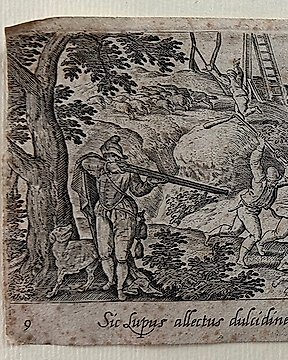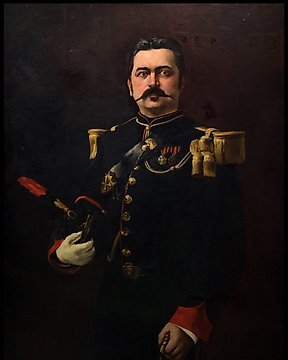Packing very good, painting in the same condition as presented on the bid. Thank you
Übersetzung ansehenFrans Floris (1519-1570), Attr. - Salome with the Head of John the Baptist
We thank Dr. Vilmos Tátrai, emeritus curator at the Museum of Fine Arts, Budapest, for tentatively suggesting an attribution of the present painting to Frans Floris the Elder (1519-1570). Indeed, the figure of Salome bears striking similarities to a female type associated with the artist (see, for example, this Susanna: https://rkd.nl/images/47405, which served as a prototype for the Uffizi canvas). While Jan Massys (1509-1575) also painted this type of female figure, the more schematic treatment aimed at capturing the psychological essence of characters, and the stronger resonance of Venetian motifs, are typical of Floris and his workshop.
Frans Floris was one of the most prominent artists active in 16th-century Antwerp. He was trained by Lambert Lombard, who encouraged him to travel to Italy and get acquainted with the work of the Italian Renaissance painters. During his second journey, he resided in Rome for a long time, devoting himself to the study of Michelangelo, Raphael and classical art, enabling him, on his return to his homeland around the middle of the century, to open his own atelier and gain a high reputation at an early stage, so much so that he was nicknamed "the Flemish Raphael". In addition to the themes of Italian Mannerism, Frans Floris was especially influenced by Venetian art. The present painting is an eloquent demonstration of the influence of the Venetian masters, and especially of Titian.
The painting is in very good shape, having been relined in the 20th century and more recently cleaned. The stretcher was replaced in the late 19th century and is still efficient.
#Tableaujune24
We thank Dr. Vilmos Tátrai, emeritus curator at the Museum of Fine Arts, Budapest, for tentatively suggesting an attribution of the present painting to Frans Floris the Elder (1519-1570). Indeed, the figure of Salome bears striking similarities to a female type associated with the artist (see, for example, this Susanna: https://rkd.nl/images/47405, which served as a prototype for the Uffizi canvas). While Jan Massys (1509-1575) also painted this type of female figure, the more schematic treatment aimed at capturing the psychological essence of characters, and the stronger resonance of Venetian motifs, are typical of Floris and his workshop.
Frans Floris was one of the most prominent artists active in 16th-century Antwerp. He was trained by Lambert Lombard, who encouraged him to travel to Italy and get acquainted with the work of the Italian Renaissance painters. During his second journey, he resided in Rome for a long time, devoting himself to the study of Michelangelo, Raphael and classical art, enabling him, on his return to his homeland around the middle of the century, to open his own atelier and gain a high reputation at an early stage, so much so that he was nicknamed "the Flemish Raphael". In addition to the themes of Italian Mannerism, Frans Floris was especially influenced by Venetian art. The present painting is an eloquent demonstration of the influence of the Venetian masters, and especially of Titian.
The painting is in very good shape, having been relined in the 20th century and more recently cleaned. The stretcher was replaced in the late 19th century and is still efficient.
#Tableaujune24
- 1
- 0
- 0
- 1
- 0
- 0
Packing very good, painting in the same condition as presented on the bid. Thank you
Übersetzung ansehen







